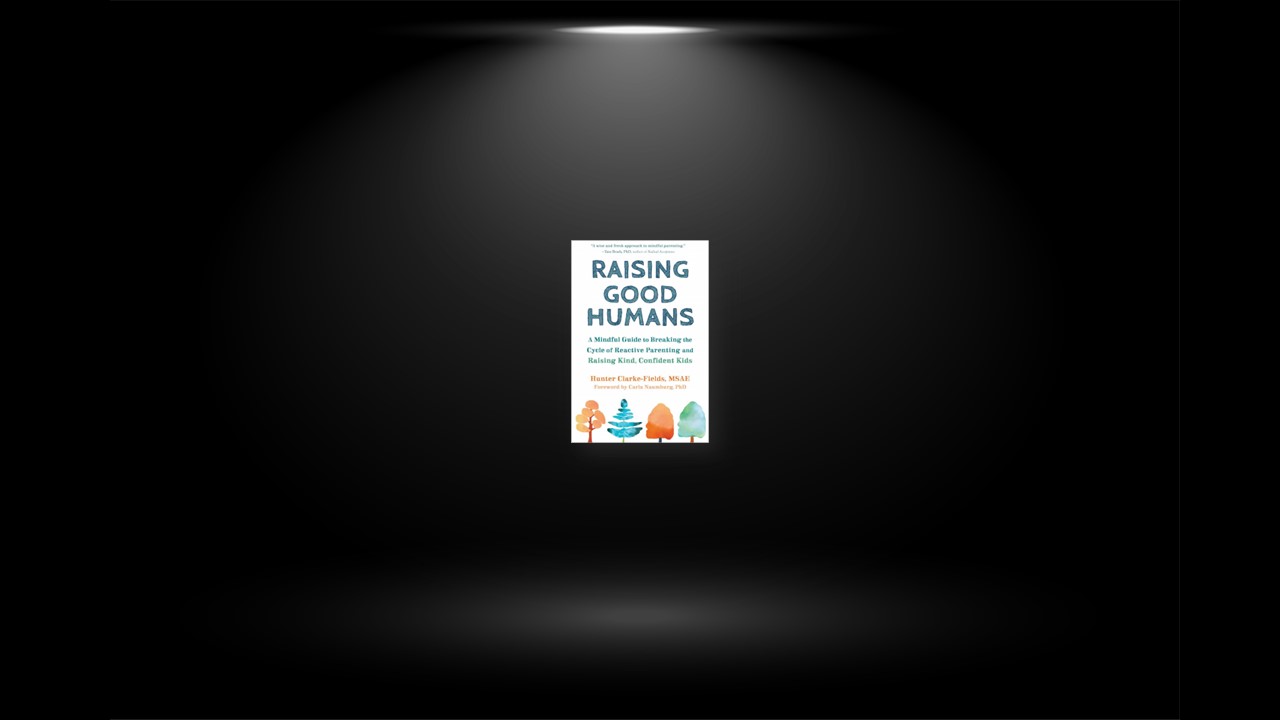Keeping Your Cool
Our reactive moments are when we are at our parenting worst. When the stress response bypasses the rational and empathetic parts of the brain, unskillful orders, threats, and yelling come out of our mouths, pushing our children away and making them less likely to cooperate with us in the long run.
While our wiring to react may be helpful in emergency situations, most of the time we are far more effective, thoughtful parents when we can calm down our stress response. Mindfulness meditation is a research-proven way of building that nonreactive muscle, bit by bit, over time. That’s why it’s a foundational skill. It will give you clearer thinking in every area of your life. You don’t have to be perfect at mindfulness and beginner’s mind practices, but notice how these skills can shift your experience as a parent.
Practice: See Your Child with Fresh Eyes
Imagine that you’re meeting your child for the first time. See him with fresh eyes, curious about who he is, as if you haven’t known him all of his life.
Really look at your child: his hair, his smile, his clothes and shoes, the way he moves his body. Be curious. Try to see details you might not normally notice.
With an attitude of curiosity rather than judgment, notice the way your child interacts with others. Pay close attention and allow yourself to be surprised.
With a regular practice of beginner’s mind, it will become easier to see your child as she is now—rather than your image of who she was in the past. With this attitude, you don’t limit your child’s possibilities (or your own) with labels. You can see her more fully and openly.
Disarming Your Triggers
Most of us weren’t taught what to do when situations trigger anger inside, so when this inevitably happens, we’re at a loss. Mostly we respond in the ways that our parents might have: yelling and losing it. Learning how to take care of our anger is a powerful practice. As we learn how to do this for ourselves, it’s a two-for-one deal: we model compassionate and effective emotional management for our children too.
We can approach our anger from many different angles. We want to make sense of our childhood and start to understand where some of the triggers may be coming from. We need to make sure we don’t have too much overall stress, which causes us to yell at our children. We can use tools to calm the body and the mind. We can look at our unique situation and create a personal plan to respond to our triggers in a healthier way. Finally, we can practice tools to acknowledge the feelings that arise—in ourselves and in our children—before they escalate to anger and rage.
Triggers can be deeply ingrained in our person. It usually takes some conscious effort to shift over to a more mindful response. Don’t get discouraged when this doesn’t happen overnight! It’s bit-by-bit, over-time healing.
Practice: Breathe to Release Tension
There are many breathing techniques out there. Here are two that can move you away from the stress response and into the opposite: rest and relaxation. Practice these deep breathing exercises to release tension at any time in your day, so that it’s easier to remember them in difficult moments!
Three-Part Breathing
This breath, also called “complete breath,” helps induce feelings of calmness and relaxation. Each in-breath and out-breath is divided into three parts with a very brief pause between them.
Breathe in slowly through the nose, sending air to the bottom of the lungs (fill the abdomen). Pause.
Then, sip in more air to fill up the ribcage. Pause.
Next, fill up the chest to your collarbones. Pause.
Breathing out through the nose, relax the chest and let out the air below the collarbones naturally. Pause.
Then, relax the ribcage, releasing more air. Pause.
Finally, pull in the belly to release the rest of the air and complete the exhale.
Repeat four times or as much as needed.
Five-Eight Breathing
Counting the breath forces the mind to focus on the present moment, moving attention away from the perceived stressors. This deep breath helps calm the body.
Count slowly to five while taking a deep breath in through the nose.
Exhale out of the nose or mouth slowly so that it takes a full count of eight to completely exhale.
Repeat four times or as much as needed.
Practicing Compassion—It Begins with You
Cultivating loving-kindness and awareness of your inner voice can have a deep and lasting impact on your relationship with your child. You are half of the parent-child relationship. It’s time to take responsibility for what you are bringing to the table. When you start to transform your thoughts from harsh criticism and judgment to empathy and acceptance of your humanity, this translates into more empathy and acceptance of others. Who you are as a person inside counts quite a lot in terms of who you want your child to be.
As you continue to develop your sitting meditation practice, these other practices will become easier. Cultivating more awareness of what’s really happening in the present moment (rather than hanging onto our stories or thoughts), is the foundation for all meaningful change—because if you can’t see it, you can’t make a different choice. Increasing your awareness of the inner critical voice may feel uncomfortable and discouraging initially, but I encourage you to not give up. We all have negativity bias to contend with. The fact that you are aware of it will help you to not act from it.
Remember, reading about this is not what makes the change. It’s all about practice. Loving-kindness might feel silly and awkward at first, but it’s a powerful practice that has lasting and meaningful benefits.
Practice: Loving-Kindness
Loving-kindness is a form of love that is active. It’s a way to look at ourselves and others with kindness instead of reflexive criticism. You can use this written-out form or listen to the audio recording available at http://www.raisinggoodhumansbook.com. Then build this practice into your meditation routine.
Sit in an alert and comfortable position. Let your mind be spacious and your heart be kind and soft. Let your body relax.
Feel your breath travel in and out of your body. Notice any thoughts that pop up, then refocus your attention on your breath.
Notice any emotions that are present. Let your body soften a bit as you exhale.
Picture someone in your life who has truly cared for you, someone who is easy to love. Picture this person in your mind and recite the following phrases:
May you be safe
May you be happy
May you be healthy
May you live with ease
You are welcome to adjust the words. Repeat the phrases over and over, letting the feelings come fully into your body and mind.
Now practice loving-kindness toward yourself. You can picture yourself as you are now or picture yourself as a four-year-old child. Say to yourself the following phrases (or a variation that resonates with you). As you repeat these phrases, you can picture yourself suffused by the light of loving-kindness:
May you be safe
May you be happy
May you be healthy
May you live with ease
At times, it may feel rote or awkward, or even bring up irritation. If this happens, it is especially important to be patient and kind toward yourself. Accept what arises with a spirit of friendliness.
Once you feel you have established some sense of loving-kindness, expand your meditation to include others: friends, community members, all beings on earth. You may even include the difficult people in your life, wishing that they too be filled with loving-kindness and peace.
Taking Care of Difficult Feelings
Big emotions like anger, fear, and sadness are an inevitable part of life for both parents and kids. The more we accept and allow our feelings, the more easily we can let them pass, avoiding the suffering that comes from resistance. Pushing away our feelings may be our cultural and familial inheritance, but this is a pattern that we can shift and change over time. When we are able to recognize, accept, investigate, and nourish mindfully our own big feelings, then we will be able to be a grounding presence for our children in their own times of need.
If you look around at the difficulties in the world, it seems that most stem from people being unable to take care of their difficult feelings. We can start to turn this pattern around in our own families, changing things for generations to follow.
Practice: Staying with a Tantrum
Staying present through a tantrum is hard work, but it has many rewarding benefits for your relationship with your child. It shows your unconditional love.
Here’s how: Do not send your child to her room or isolate her. Instead, stay with your child. Get as close as you feel comfortable, keeping her safe and keeping objects and others safe from her. Sit or get down low to be at your child’s level.
Notice your own sensations and thoughts. Are you starting to get tense? If so, take deep, slow breaths with long exhales to calm down your stress response. Notice if you have feelings of wanting to escape. If you can, stay and be curious about these feelings. Acknowledge them, and focus your attention on slow, calm breathing. You may notice embarrassment (especially if you’re in public) or anger arise. Acknowledge those feelings, then refocus on staying with your child and breathing deeply and slowly. Practice relaxing your body.
Say to yourself, “I am helping my child,” reminding your nervous system that your child is not a threat. Don’t pressure yourself to have the right words. Remember that staying present is enough. As you practice staying nonreactive in this challenging moment, you are building your ability to do so again in the future. Remember that you are telling your child, “I see you. I hear you. It’s okay for you to have these feelings. I’m here for you no matter what. You are safe.”
As the tantrum subsides, offer hugs and closeness. Don’t rush to the next thing. Move slowly and allow time for recovery.


